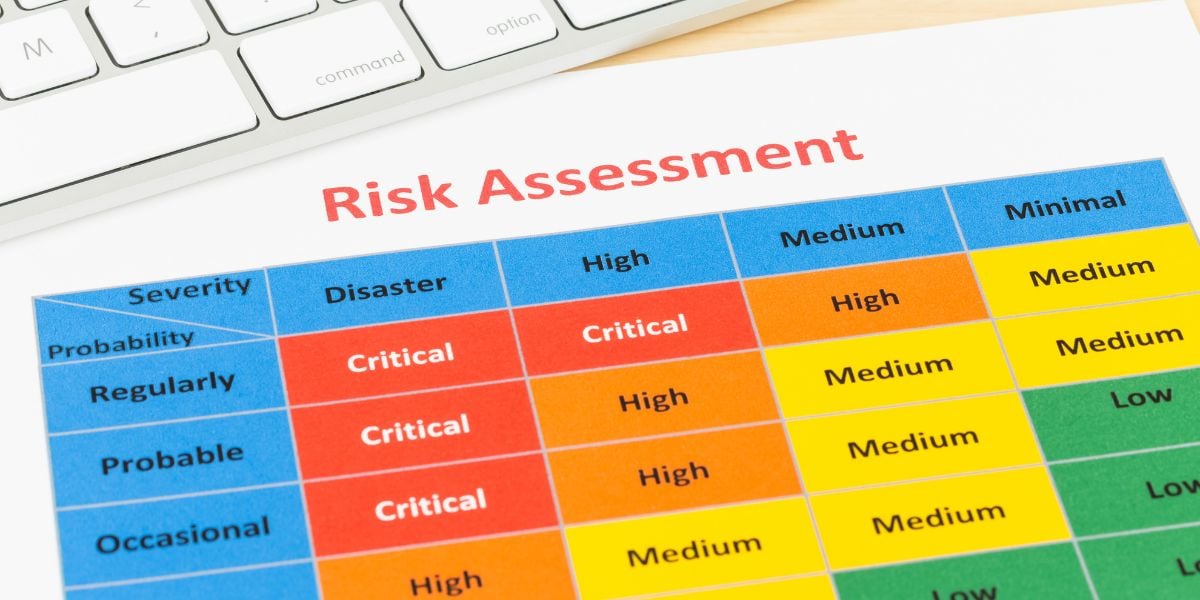2 min read
Conducting HIPAA risk assessments for mental health practices
Liyanda Tembani
July 17, 2024

Conducting risk assessments helps mental health practices proactively resolve issues related to protected health information (PHI). Practices can identify risks by involving a diverse assessment team and using tools like the HHS Security Risk Assessment Tool.
Understanding HIPAA requirements for mental health practices
PHI encompasses all health information, including mental health records, and HIPAA provides guidelines for handling this data. Safeguarding data maintains patient trust and helps practices avoid legal penalties. Mental health practices must adhere to HIPAA's Privacy Rule, which governs the use and disclosure of PHI, and the Security Rule, which requires safeguards to protect electronic PHI.
The importance of HIPAA risk assessments
Regular risk assessments enable practices to identify risks such as unauthorized access, data breaches, or mishandling of PHI. Once identified, practices can implement targeted security measures to mitigate risks. Practices should evaluate how PHI is created, stored, accessed, and transmitted.
Related: Who conducts a risk assessment?
Components of a HIPAA risk assessment
- Identification of PHI: Determine where PHI is created, received, maintained, or transmitted within the practice, including electronic records, paper documents, and verbal communications about patient information.
- Assessment team: Assemble a team of clinical staff, administrative personnel, and IT specialists for a comprehensive review of current data safeguards.
- Tools: Utilize proper tools or frameworks to assess the security of PHI.
- Documentation: Document the assessments' methodology, findings, and mitigation strategies to demonstrate compliance and readiness for audits.
Tools for conducting risk assessments
Using recognized tools and frameworks simplifies the risk assessment process. The HHS Security Risk Assessment Tool offers specific guidance tailored to healthcare settings, including mental health practices. This tool assists in identifying vulnerabilities such as outdated software, insufficient access controls, or inadequate encryption measures that could compromise PHI security.
According to the HHS, "The tool’s features make it useful in assisting small and medium-sized health care practices and business associates in complying with the Health Insurance Portability and Accountability Act (HIPAA) Security Rule."
Steps to conducting a HIPAA risk assessment
- Preparation: Develop a detailed plan outlining the scope, objectives, and timeline of the assessment. Assign roles and responsibilities within your assessment team to ensure accountability and thoroughness.
- Identification: Identify potential vulnerabilities to PHI by reviewing your practice's systems, processes, and physical environments. Consider workforce training, data storage methods, and third-party service providers handling PHI.
- Analysis: Evaluate the likelihood and potential impact of identified risks on patient confidentiality and data integrity. Prioritize risks based on their severity to focus mitigation efforts effectively.
- Mitigation: Develop and implement strategies to mitigate identified risks, including enhancing physical security measures, improving staff training programs on HIPAA compliance, updating software systems, or implementing encryption protocols for electronic PHI.
- Documentation: Document all assessment findings, mitigation strategies, and ongoing reviews in a detailed report. Include evidence of implemented safeguards and any corrective actions to address identified vulnerabilities.
Best practices for ensuring HIPAA compliance
- Use of de-identified data: Minimize exposure of sensitive patient information during assessments by using de-identified data whenever possible.
- Secure communication: Use HIPAA compliant email or encrypted messaging channels for discussing assessment findings and sensitive patient information to prevent unauthorized access.
- Regular updates and training: Keep security measures current with technological advancements and conduct staff training sessions on HIPAA policies and procedures.
FAQs
How often should HIPAA risk assessments be conducted?
Risk assessments should be conducted annually, or whenever significant changes occur in practice operations, technology, or regulations.
What should be included in the documentation of a HIPAA risk assessment?
Documentation should include methodologies used, identified risks, prioritization of threats, mitigation strategies implemented, and ongoing reviews. Documentation may be necessary during audits or if a breach occurs.
What role does encryption play in HIPAA compliance for electronic PHI?
Encryption protects electronic PHI during transmission and storage. HIPAA requires practices to implement encryption technologies to mitigate the risk of unauthorized access and data breaches.
Subscribe to Paubox Weekly
Every Friday we'll bring you the most important news from Paubox. Our aim is to make you smarter, faster.



